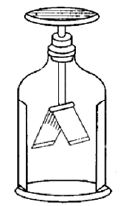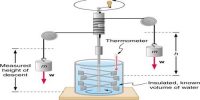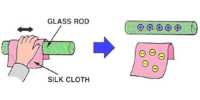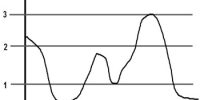The instrument which detects the presence and nature of charge in any body is called electroscope.
A metallic circular disk is fixed on the top of brass or any metallic rod [Fig] and at lower end of the rod two light leaves of gold are attached. Instead of gold aluminium or any other light metal can also be used. The lower end of the rod with the leaves is placed in a glass jar passing through a cork of nonconductor matter C. As the apparatus is kept inside a glass jar, the humidity and the wind cannot damage the instrument.

Charging the electroscope: If a glass rod is rubbed with silk, it becomes positively charged. If that charged rod is attached to the disk or sphere of the electroscope, some charge is transferred from the rod to the disk. This charge reaches to the gold leaves through conducting metal rod. As the gold leaves receive similar charges, they repel each other and move away from each other or explode. In this situation, if the glass is removed but the gap between the leaves is not reduced, then it can be decided that the electroscope is charged with positive ions.
To charge the electroscope with negative ions, an ebonite rod should be rubbed with flannel and this negatively charged ebonite rod be allowed to touch the disk in the above mentioned process. As a result, the gold leaves of the electroscope will be charged. negatively and they will repel each other and will remain in that position. The more is the quantity of charge the more will be the gap between the leaves.
Detection of existence of electric charge: To determine the presence of charge in any body, the body may be brought to an unchanged electroscope. If the two leaves move away from each other then it is understood that there is an existence of charge in the body but if they don’t move away from each other then it is understood that the body has no charge.















